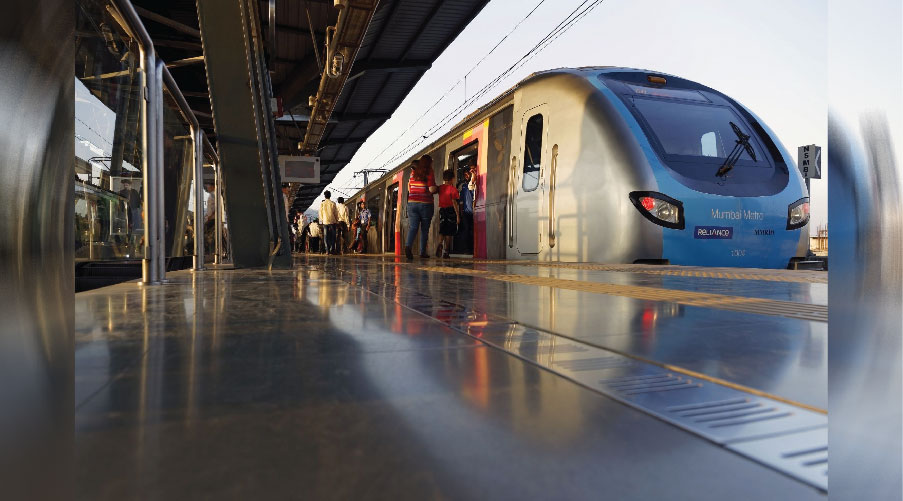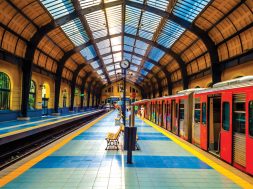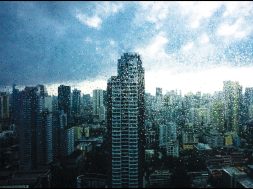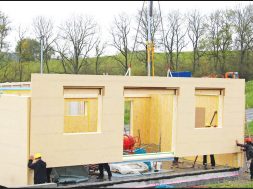Blending technology and sustainability for Next-Gen transit

The leading experts across the architectural businesses have shared their prominent insights on the evolution of India’s transit landscape and innovative architectural designs for sustainable metro stations.
In an era where efficient and sustainable urban transportation is paramount, India’s architectural landscape of railway and metro stations is undergoing a dynamic transformation. With an intricate interplay of design, technology, and sustainability, these transit hubs are poised to shape the future of public transportation in the country.
Satyakam Garg, the Director and Principal Consultant of Projects & Planning at the GLS Group of Companies has a keen eye for innovation and functionality; Garg has been at the forefront of assessing and refining the design aspects of railway and metro stations in India. Garg emphasises the unique considerations intrinsic to these public transport systems.
Safety takes precedence when catering to the substantial influx of passengers. But it doesn’t stop there – Garg envisions a seamless blend of passenger comfort, convenience, and accessibility, including facilities for disabled individuals. Integrating diverse modes of transport, like buses, forms the cornerstone of his design philosophy. Garg envisions stations as not standalone entities but vital nodes in an interconnected transportation web.
According to Pankaj Vatsa, the Director of Transportation at Egis – India and South Asia, “the significance of station location selection and environmental impact mitigation”. Recent controversies, notably in Mumbai, have spotlighted the importance of these choices. Pankaj Vatsa champions sustainable design principles, a response to the changing climate landscape and increased urban vulnerability to natural disasters.
For Vatsa, holistic development isn’t just a concept; it’s a mandate. Sustainability means not compromising future needs while catering to the present. The integration of transportation modes is a strategic move to propel metro use. In this tapestry of design, aesthetics play an influential role. Visual captivating stations act as magnets, drawing people to metro services. He accentuates the power of incorporating local materials, art, and sculptures to craft stations celebrating aesthetics and cultural heritage.
Amitava Das, Assistant Vice President of Systra India, envisions sustainability as a catalyst for rethinking traditional methodologies. His mission revolves around minimising construction time, optimising water usage, and embracing efficient construction techniques like prefabrication to reduce energy consumption. He champions the utilisation of locally sourced materials, an approach that aligns with sustainability and supports the local economy.
Das believes that the true essence of sustainability lies in vernacular architecture. Design inspired by the local environment and ethos offers a blueprint for sustainable progress. His advocacy extends to harnessing digital platforms, from 3D to 6D, to streamline construction planning and resource management, elevating the overall sustainability of railway and metro stations.
Shashi Kant Mishra, Associate Vice President & Technical Director of Pandrol Rahee Technologies Pvt. Ltd., sheds light on the intricate dance between design and passenger comfort. His expertise emphasises the need to mitigate noise and vibrations from train movement within stations. Mishra’s innovative solutions marry station structural design with track configuration to ensure travellers a tranquil and comfortable environment.
Mishra’s vision doesn’t stop at comfort; it extends to cleanliness and aesthetics. His insights underline the significance of maintaining pristine and odour-free stations. By focusing on these facets, India can redefine the standards of railway stations, creating environments that rival their European counterparts in quality, comfort, and visual appeal.
As the tides of progress sweep across the transit landscape, Vatsa underscores the pivotal role of emerging technologies and sustainable materials in shaping eco-friendly metro systems. The combination of design and technology finds expression in digital twins for optimisation and IoT for energy efficiency. Smart grids that adapt power consumption to demand and innovative materials like lightweight alloys and low VOC paints symbolise technology’s transformative potential.
Satyakam Garg’s insights don’t merely paint a picture of modern station design; they sculpt it. His vision centres on optimising passenger convenience through thoughtful spatial arrangements. His recommendations, from harnessing natural light to selecting durable materials, echo the symphony of aesthetics, functionality, and sustainability. The emphasis on insulating station roofs to combat rising temperatures underscores the commitment to a greener, cooler future.
For Das, the trajectory to energy efficiency in station construction is paved with strategic design and technological integration. He champions off-site fabrication to curtail resource consumption and on-site construction. Water and power conservation and elevated construction quality comprise the blueprint for energy efficiency”. His insights highlight the pivotal role of sustainable materials, local resources, and recycled materials in shaping the future of transit infrastructure.
Mishra weaves the narrative of modern railway stations into the tapestry of the Swachh Bharat Abhiyan. His design philosophy embraces an embedded rail system with rubber profiles to ensure an organised and level track surface and a cleaner and more hygienic environment. His vision aligns with the campaign’s cleanliness, waste management, and pristine public space goals.
52
Cookie Consent
We use cookies to personalize your experience. By continuing to visit this website you agree to our Terms & Conditions, Privacy Policy and Cookie Policy.










